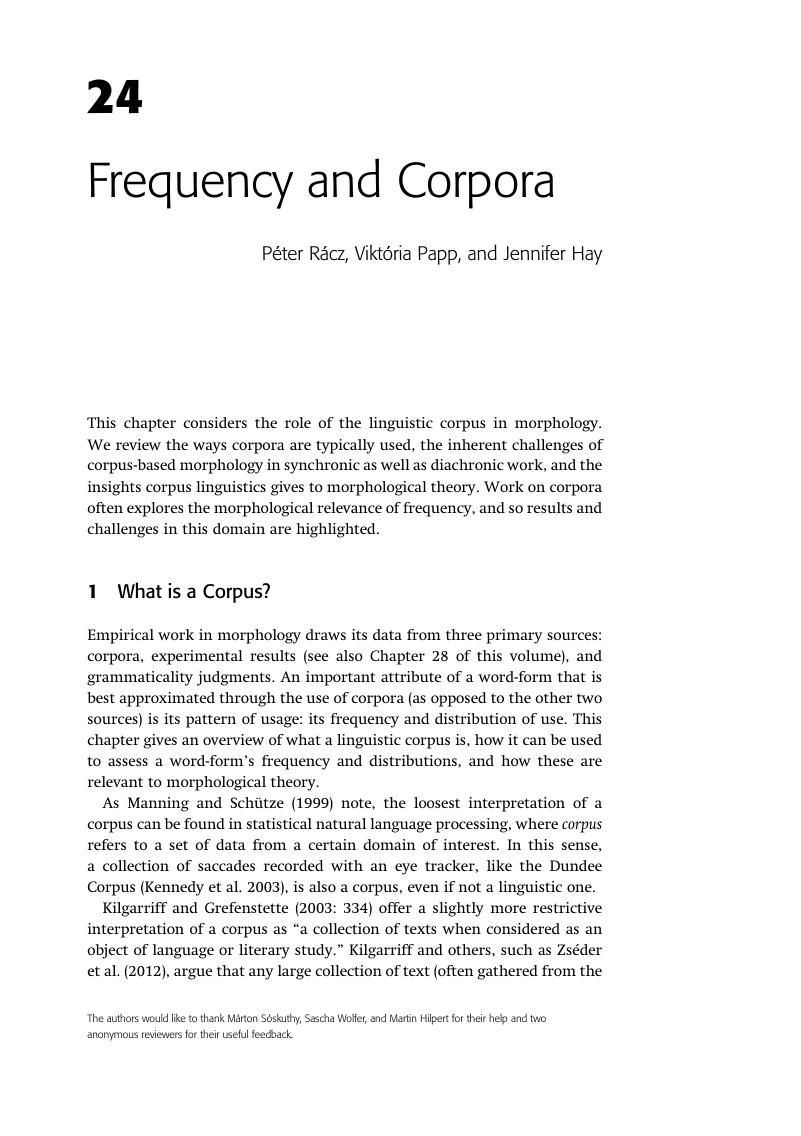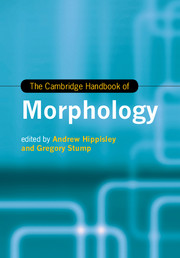Book contents
- The Cambridge Handbook of Morphology
- Cambridge Handbooks in Language and Linguistics
- The Cambridge Handbook of Morphology
- Copyright page
- Contents
- Contributors
- Acknowledgments
- Abbreviations
- 1 Introduction
- Part I Foundations of Morphological Theory
- Part II Issues in Morphological Theory
- Part III Morphological Principles
- Part IV Morphological Frameworks
- Part V The Role of Morphology in Theories of Phonology and Syntax
- Part VI Domains for the Evaluation of Morphological Theories
- 24 Frequency and Corpora
- 25 Morphology in Typology
- 26 Morphological Change
- 27 Morphology and Language Acquisition
- 28 Experimental Studies of Morphology and Morphological Processing
- 29 Computational Morphology
- Index of languages
- Index of names
- Index of subjects
- References
24 - Frequency and Corpora
from Part VI - Domains for the Evaluation of Morphological Theories
Published online by Cambridge University Press: 21 January 2017
- The Cambridge Handbook of Morphology
- Cambridge Handbooks in Language and Linguistics
- The Cambridge Handbook of Morphology
- Copyright page
- Contents
- Contributors
- Acknowledgments
- Abbreviations
- 1 Introduction
- Part I Foundations of Morphological Theory
- Part II Issues in Morphological Theory
- Part III Morphological Principles
- Part IV Morphological Frameworks
- Part V The Role of Morphology in Theories of Phonology and Syntax
- Part VI Domains for the Evaluation of Morphological Theories
- 24 Frequency and Corpora
- 25 Morphology in Typology
- 26 Morphological Change
- 27 Morphology and Language Acquisition
- 28 Experimental Studies of Morphology and Morphological Processing
- 29 Computational Morphology
- Index of languages
- Index of names
- Index of subjects
- References
Summary

- Type
- Chapter
- Information
- The Cambridge Handbook of Morphology , pp. 685 - 709Publisher: Cambridge University PressPrint publication year: 2016
References
- 4
- Cited by

